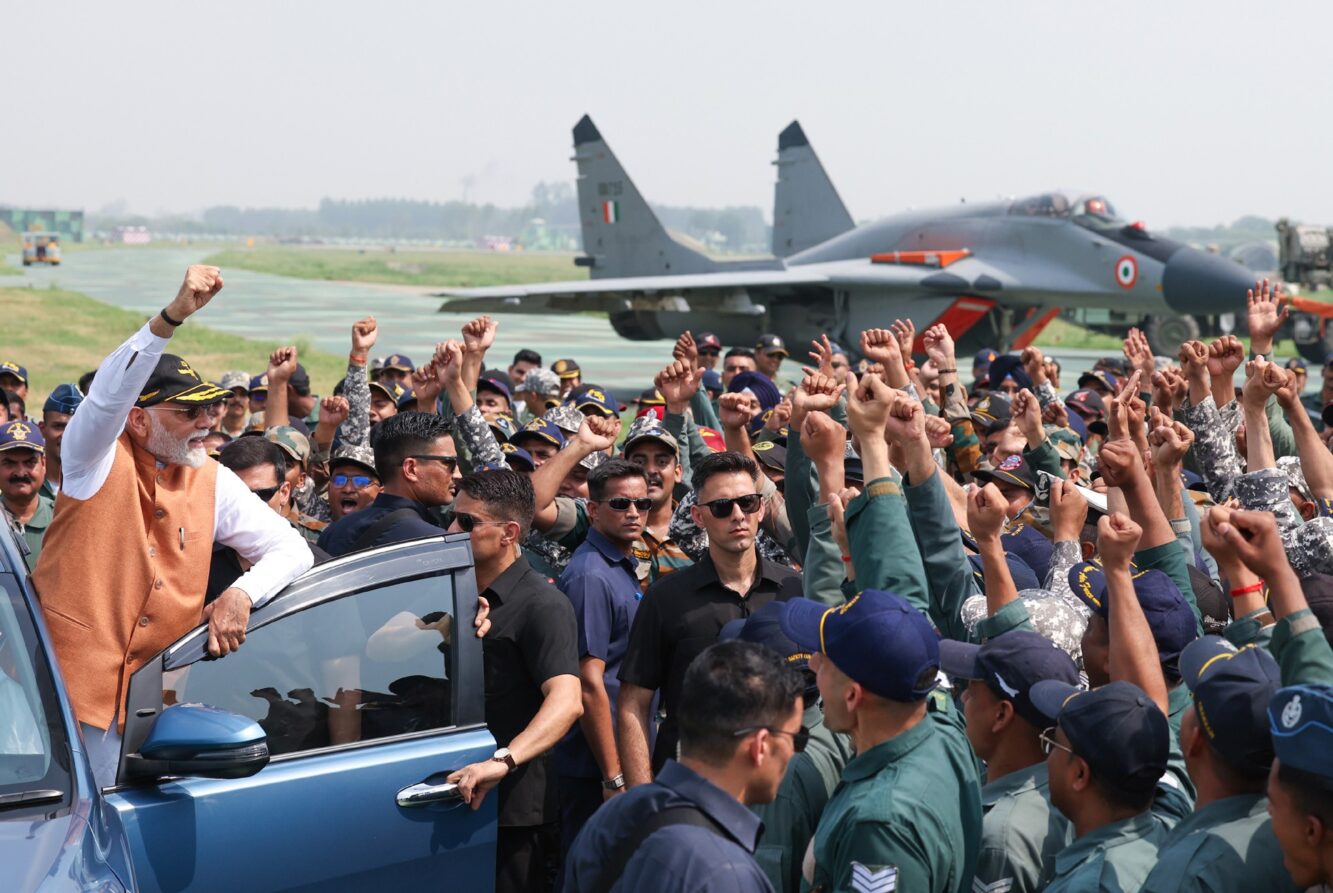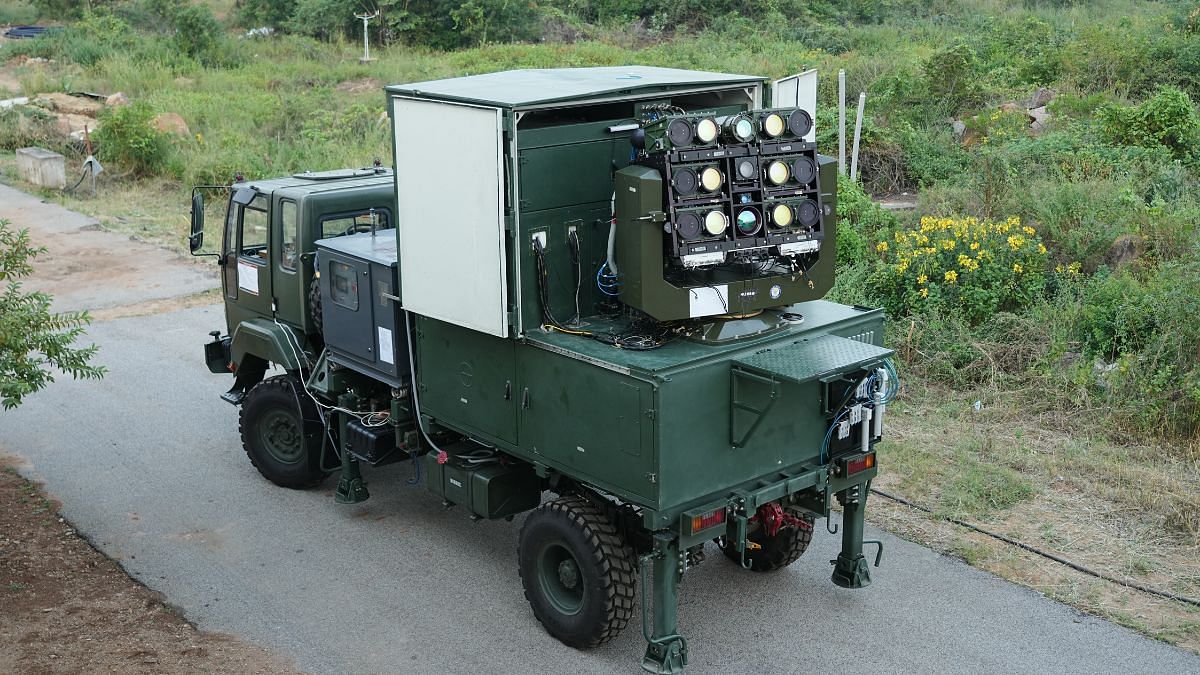Operation Sindoor: How India's Advanced Military Technology is Reshaping Regional Security
- Get link
- X
- Other Apps
Operation Sindoor: How India's Advanced Military Technology is Reshaping Regional Security

India's recent military operation against terrorist infrastructure in Pakistan has demonstrated the country's growing technological prowess and strategic resolve, signaling a shift in regional power dynamics and showcasing indigenous defense capabilities.
In the early hours of May 7, 2025, India launched Operation Sindoor, a calibrated military response targeting nine terrorist infrastructure facilities in Pakistan and Pakistan-occupied Kashmir (PoK). The operation, which came in response to the Pahalgam terror attack that claimed 26 lives, has been described by military analysts as India's most significant cross-border military action in five decades.
What has captured global attention is not just the precision and strategic execution of the operation, but the advanced military technology deployed by Indian forces, particularly the use of its newly developed laser-based weapon systems during defensive operations.

Understanding Operation Sindoor: Context and Execution
According to official statements from India's Ministry of Defence, Operation Sindoor emerged as a calibrated response to an evolving pattern of cross-border terrorism. The operation, conducted on the night of May 7-8, involved a tri-service effort with coordinated strikes on terrorist infrastructure.
Dr. Rahul Bedi, a senior defense analyst, explains: "Operation Sindoor represents a significant evolution in India's counter-terrorism strategy. Unlike previous operations, this was a more comprehensive effort involving multiple service branches and showcasing India's growing capabilities in precision strikes, intelligence gathering, and strategic deployment."
The operation targeted nine terrorist launchpads across Pakistan and Pakistan-occupied Kashmir, destroying infrastructure that intelligence reports had linked to planning for future attacks on Indian soil. What distinguished this operation was the precision and tactical sophistication with which it was executed.
"Operation Sindoor pitted India's indigenously developed weapons systems against Chinese-supplied platforms fielded by Pakistan. And India didn't just win—it dominated."- Tom Cooper, U.S. Aerial Warfare Analyst
Breakthrough in Laser-Based Weapon Technology
Perhaps the most technologically significant aspect of recent Indian military advancements revealed during the operation's aftermath was India's successful deployment of a 30-kilowatt laser-based directed-energy weapon (DEW) system. Initially tested in April 2025, this system demonstrated its battlefield capability during defensive operations following the initial strikes.

Developed by the Defence Research and Development Organisation (DRDO), the laser weapon system represents a significant milestone in India's directed energy weapons program. According to defense sources, the system achieved a test range of 3.5 kilometers and demonstrated high targeting precision and effectiveness against aerial threats.
The system's capabilities were on full display during the defensive phase of Operation Sindoor, when it successfully neutralized multiple aerial threats. The Integrated Air Command and Control System (IACCS) demonstrated its Directed Energy Weapons capability, using high-powered lasers to target and neutralize incoming threats.
According to Dr. Ajay Lele, Senior Fellow at the Institute for Defence Studies and Analyses, "India joining the elite club of nations with operational laser weapons represents a paradigm shift in its defense capabilities. These systems offer cost-effective defense against drones and other aerial threats, with each 'shot' costing a fraction of traditional missile-based defense systems."

Indigenous Technology: The Aatmanirbhar Impact
A key narrative emerging from Operation Sindoor is India's growing self-reliance in defense technology. The operation heavily utilized India's indigenously developed platforms including:
- Rudram-1 Anti-Radiation Missiles: India's first indigenously developed anti-radiation missile that homes in on enemy radar emissions
- Tata Advanced Systems Limited's (TASL) ALS-50 Loitering Munition: Autonomous weapon systems capable of loitering in an area before striking
- NewSpace Research and Technologies' Swarm Drones: Coordinated drone systems for reconnaissance and targeted strikes
- Integrated Air Command and Control System (IACCS): Advanced network-centric warfare system
- 30-kilowatt laser-based directed-energy weapon system: Capable of neutralizing aerial threats including fixed-wing aircraft, missiles, and swarm drones
These indigenous systems were pitted against Chinese-supplied platforms used by Pakistan, including HQ-9 surface-to-air missile systems. According to U.S. military analysts, India's homegrown technology demonstrated superior capability in this confrontation.
Strategic Implications for Regional Security
The successful execution of Operation Sindoor and the demonstration of advanced military technology have significant implications for regional security dynamics.
Dr. Harsh V. Pant, Director of Studies at Observer Research Foundation, notes: "The operation establishes new parameters in India's response options to cross-border terrorism. More importantly, the technological sophistication displayed signals India's emergence as a defense technology producer rather than merely an importer."
This technological demonstration comes at a time when India is actively seeking to expand its defense exports and position itself as a credible alternative to traditional defense suppliers in the region.
The operation has also triggered renewed interest in India's defense technology among neighboring countries seeking to diversify their defense procurement options.
The Future of India's Military Technology
Looking ahead, defense experts suggest that India's successful demonstration of laser-based defense systems and other indigenous technologies during Operation Sindoor is likely to accelerate the country's research and development in advanced military systems.
Project Surya, which aims to deploy laser systems aboard air defense platforms and border-based mobile units, is reportedly being fast-tracked following the successful battlefield demonstration.
According to sources in the Ministry of Defence, India is also developing more powerful systems, potentially including a 300-kilowatt directed-energy laser weapon with a range of up to 20 kilometers, codenamed "Surya."
As global powers take notice of India's technological advancements, the country appears positioned to leverage these capabilities both for strategic deterrence and potential defense exports, further strengthening its position as an emerging power in defense technology.
Conclusion
Operation Sindoor represents a watershed moment in India's military evolution, showcasing not just tactical sophistication but technological maturity. The successful deployment of advanced systems, particularly the laser-based defense capabilities, signals India's entry into an elite club of nations with operational directed-energy weapons.
As regional security dynamics continue to evolve, India's demonstration of these capabilities may well reshape deterrence calculations and military procurement strategies across South Asia and beyond.
What remains clear is that the operation has firmly established India's growing stature as both a responsible military power and an increasingly self-reliant developer of advanced defense technology—a position that will likely influence regional security architecture for years to come.
Related Articles

India Unveils Indigenous 30-Kilowatt Laser Weapon With 5 Km Range
India joins the elite club of nations with operational directed-energy weapons as DRDO successfully tests advanced laser system.

Decoding India's Military Codenames: From 'Riddle' to 'Operation Sindoor'
Understanding the historical significance and cultural symbolism behind India's military operation naming conventions.

Four Days in May: The India-Pakistan Crisis of 2025
A comprehensive analysis of the strategic calculations and diplomatic maneuvering during the crucial days following Operation Sindoor.
- Get link
- X
- Other Apps

Comments
Post a Comment